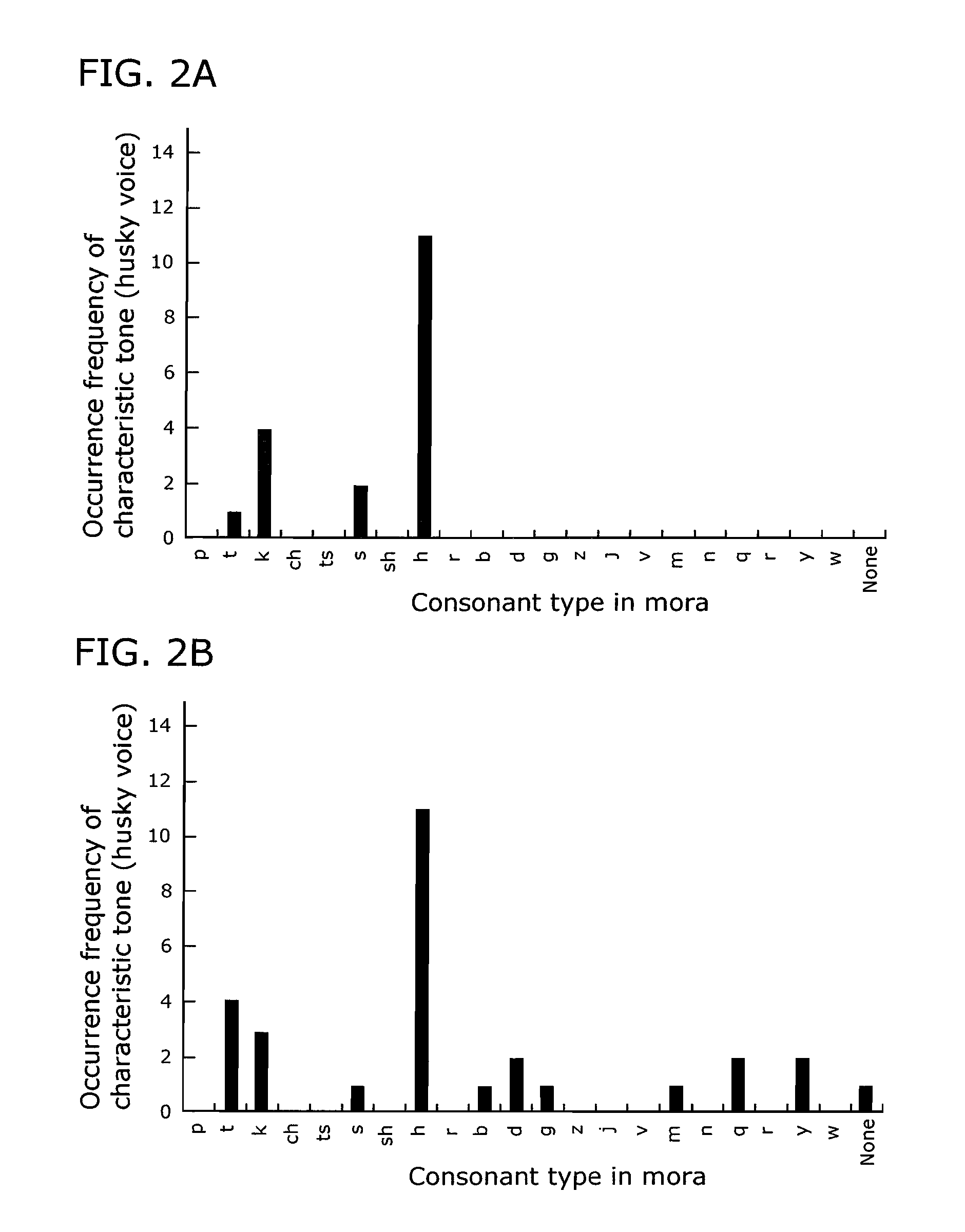Emotion recognition apparatus
a technology of emotion recognition and apparatus, applied in the field of emotion recognition apparatus, can solve the problems of user's more or less getting angry or frustrated, the interaction system may not be able to correctly recognize the user's speech, and the user's anger may increase or decreas
- Summary
- Abstract
- Description
- Claims
- Application Information
AI Technical Summary
Benefits of technology
Problems solved by technology
Method used
Image
Examples
first embodiment
[0103]FIG. 4 is a functional block diagram showing a speech-based emotion recognition apparatus according to a first embodiment of the present invention. FIG. 5 is a flowchart showing an operation of the emotion recognition apparatus according to the first embodiment. FIG. 6 shows one example of a computation rule stored in a characteristic tone occurrence indicator computation rule storage unit 110. FIG. 7 shows one example of a judgment criterion stored in an emotion type judgment criterion storage unit 112. FIG. 8 shows one example of an emotion strength computation rule stored in an emotion strength computation rule storage unit 114.
[0104]In FIG. 4, the emotion recognition apparatus is an apparatus for recognizing an emotion based on a speech, and includes a microphone 1, a speech recognition feature parameter extraction unit 101, an inverse filter 102, a periodicity analysis unit 103, a characteristic tone detection unit 104, a feature parameter database 105, a speech recogniti...
second embodiment
[0149]In emotion recognition that uses a characteristic tone in a speech in the present invention, highly accurate emotion recognition can be performed by computing a characteristic tone occurrence indicator using a phoneme sequence obtained as a result of speech recognition. In speech recognition, however, a characteristic tone accompanied by an emotion often deviates from a normal acoustic model. This causes a drop in speech recognition accuracy. In the first embodiment, this problem is solved by providing an acoustic model that includes a characteristic tone and switching to such an acoustic model. However, the provision of a plurality of types of acoustic model requires an increase in data amount, as well as an increase in offline operation for generating such acoustic models. To overcome this problem of the first embodiment, a second embodiment of the present invention relates to a structure of modifying a recognition result of an acoustic model by using a language model to imp...
third embodiment
[0177]FIG. 17 is a functional block diagram showing a speech-based emotion recognition apparatus according to a third embodiment of the present invention. FIG. 18 is a flowchart showing an operation of the emotion recognition apparatus according to the third embodiment. FIG. 19 shows one example of a phoneme input method according to the third embodiment.
[0178]In FIG. 17, only the parts that are different from FIG. 4 are described below, while omitting an explanation of the same parts as FIG. 4. In FIG. 18 too, only the parts that are different from FIG. 5 are described below, while omitting an explanation of the same parts as FIG. 5.
[0179]The emotion recognition apparatus shown in FIG. 17 has a similar structure to the one shown in FIG. 4, except that the speech recognition feature parameter extraction unit 101 in FIG. 4 has been replaced with a feature parameter extraction unit 301, the feature parameter database 105 and the switch 107 have been omitted, and the speech recognition...
PUM
 Login to View More
Login to View More Abstract
Description
Claims
Application Information
 Login to View More
Login to View More - R&D
- Intellectual Property
- Life Sciences
- Materials
- Tech Scout
- Unparalleled Data Quality
- Higher Quality Content
- 60% Fewer Hallucinations
Browse by: Latest US Patents, China's latest patents, Technical Efficacy Thesaurus, Application Domain, Technology Topic, Popular Technical Reports.
© 2025 PatSnap. All rights reserved.Legal|Privacy policy|Modern Slavery Act Transparency Statement|Sitemap|About US| Contact US: help@patsnap.com



